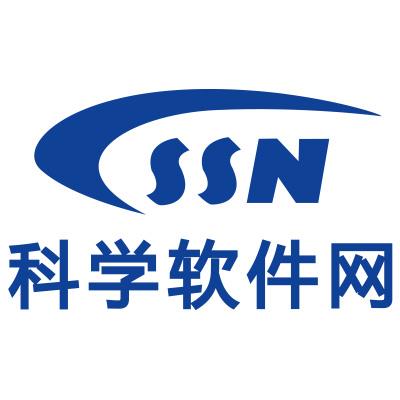 8
8
对溶质运移来说,软件既支持连续和变化的规定浓度(Dirichlet或first-type)也支持浓度通量边界(Cauchy或third-type)。弥散张量包含分子扩散和曲折的结果反应影响。
附加模块
UNSATCHem模块主要是用来模拟运移和主要离子的反应。UNSATCHEM模块模拟变饱和多孔介质中主要离子的运移(如钙、镁、钠、钾、SO4、碳酸气和Cl),包括主要离子平衡和非平衡化学反应动力学。生成的代码可用于预测土壤在瞬变流动中的主要离子化学、水和溶质通量。
Wetlands模块是用来模拟人工湿地反应的。人工湿地水处理系统的设计能优化自然环境中发现的处理过程。HYDRUS湿地模块包括两个biokinetic模型公式。而在原始湿地CW2D模块中,考虑到了**物、氮和磷需氧和缺氧的转换和降解过程,以及对新的CWM1模块中需氧、缺氧和厌氧过程的**物,氮和硫的考虑。
DualPerm模块(2.02版本及以上)用于模拟双渗透多孔介质中二维可变饱和水运动和溶质运移,即**和非平衡水分和溶质运移。
C-Ride模块(2.02版本及以上)用于模拟经常发生的强烈吸附污染物的二维胶体的溶质运移,(如如重金属、放射性核素、制药、农药、炸药),主要与固相关联,通常认为它们是静止不动的,但也可以吸附移动胶体粒子(例如微生物、腐殖物质、悬浮粘土颗粒和金属氧化物),可以作为污染物的载体,从而为这些污染物提供一个快速的运移途径。
HP2模块(2.02版本及以上)综合了HYDRUS(其二维部分)与PHREEQC地球化学代码[1999年的Parkhurst和Appelo]开发了这个新综合仿真工具(HP2—HYDRUS-PHREEQC-2D缩写),主要是区别于一个类似的一维模块HP1。这个模块可以考虑各种混合平衡/动力生物地球化学反应。
HYPAR是标准二维和三维HYDRUS计算模块的并行版本。(h2d_calc.exe and h3d_calc.exe)
HYPAR使用并行计算工具和技术来有效利用多核以及多处理器计算机的优势并且显著加快耗时的模拟,尤其是那些需要大量的有限元素
The HYDRUS software has been developed by leading (award winning) scientists in the field of vadose zone hydrology (Rien van Genuchten and Jirka Simunek). Note that both of them are Fellows of AGU (American Geophysical Union), AAAS (American Association for Advancement of Science, SSSA (Soil Science Society of America) and ASA (American Society of Agronomy), which are the highest awards given by these respective societies. Both these scientists are one of the most widely cited researchers in their field of science, having an h-index of 66 and 56 (in 2019), respectively, and tens of thousands of citations (both according to Web of Knowledge). Always at the cutting edge of the most recent developments in vadose zone hydrology.
后处理
输出图形包括水含量、流速、浓度、温度在空间或横断面视图的2D等高线(等值线或彩色光谱)。图形输出还包括速度矢量图、彩色边缘、颜色的点、连续的时间步的图形显示和动画以及选定的边界或内部截面线图。用户可以将感兴趣的区域缩放,横截面视图的垂直刻度也可以放大。网格还可以展示边界和编号的三角形、边缘和点。观察点可以添加到网格的任何地方。网格和/或空间分布结果(压力头、水含量、速度、浓度和温度)的视图都使用高分辨率彩色或灰阶值。界面还包括一个内容丰富的在线帮助菜单。
域和有限元网格区域
为了简化复杂的运移几何图形的工作,这些图形可以划分为简单的部分称为Section. 只有这些简单的部分可以在视图窗口中显示,而剩下的部分被隐藏。一共有两种类型的Section:基于几何对象的和基于有限元网格的。可以同时显示多个section。使用各种命令可以切断和隐藏不需要的运移区域部分。
系统要求
操作系统
Windows XP / Windows Vista (32 or 64bit) / Windows 7 (32 or 64bit) / Windows 8 (32 or 64bit)
2 GHz X86 CPU
2 MB RAM
10 GB的硬盘空间,至少500 MB 的安装空间
分辨率1024 x 768 像素
推荐系统配置
使用HYDRUS 3D的模型,推荐的系统配置为:
操作系统Windows 7 (32-bit或64-bit)
3GHz或更高的多核CPU
4 GB RAM (64-bit系统8GB)
500 GB 硬盘空间
The HYDRUS program is a finite element model for simulating the two- and three-dimensional movement of water, heat, and multiple solutes in variably saturated media. The HYDRUS program numerically solves the Richards equation for saturated-unsaturated water flow and convection-dispersion type equations for heat and solute transport. The flow equation incorporates a sink term to account for water uptake by plant roots. The heat transport equation considers movement by conduction as well as convection with flowing water. The governing convection-dispersion solute transport equations are written in a very general form by including provisions for nonlinear nonequilibrium reactions between the solid and liquid phases, and linear equilibrium reaction between the liquid and gaseous phases. Hence, both adsorbed and volatile solutes, such as pesticides, can be considered. The solute transport equations also incorporate the effects of zero-order production, first-order degradation independent of other solutes, and first-order decay/production reactions that provide the required coupling between the solutes involved in the sequential first-order chain. The transport models also account for convection and dispersion in the liquid phase, as well as diffusion in the gas phase, thus permitting the model to simulate solute transport simultaneously in both the liquid and gaseous phases. At present, HYDRUS considers up to fifteen solutes, which can either be coupled in a unidirectional chain or move independently of each other. Physical nonequilibrium solute transport can be accounted for by assuming a two-region, dual porosity type formulation, which partitions the liquid phase into mobile and immobile regions. Attachment/detachment theory, including the filtration theory, is included to simulate transport of viruses, colloids, and/or bacteria.